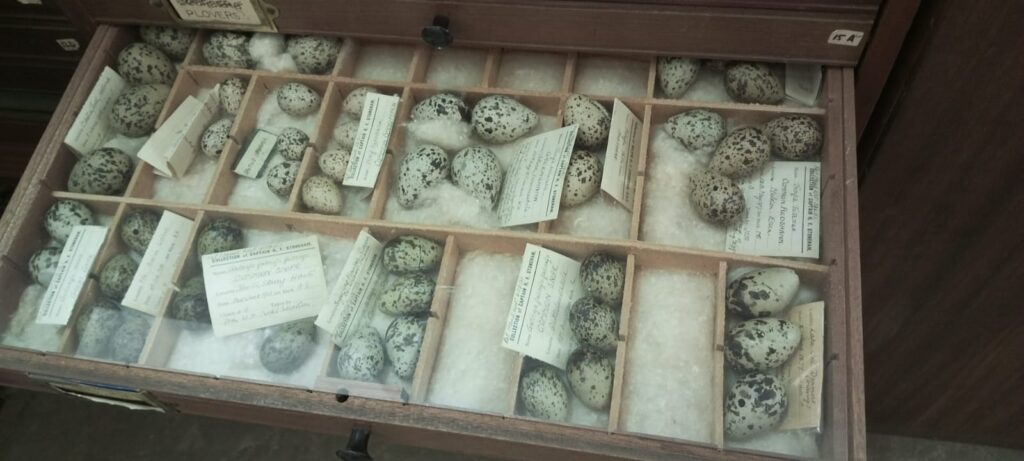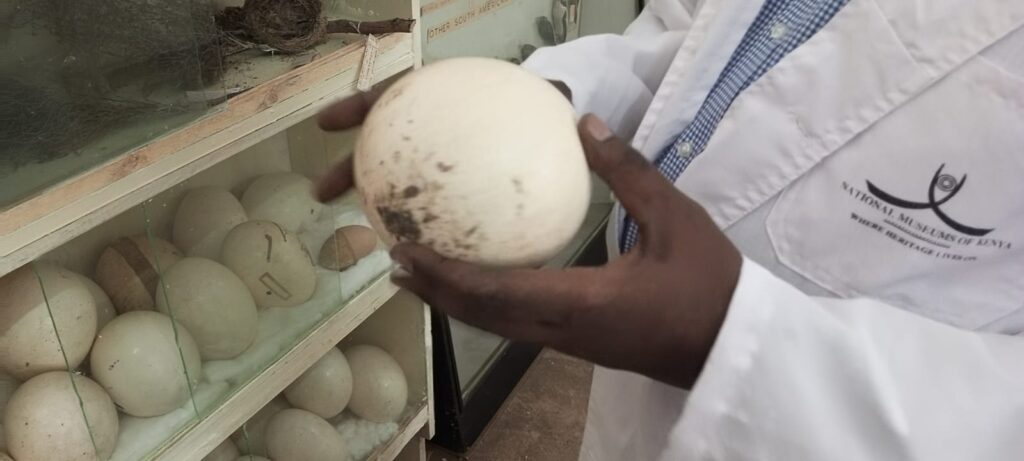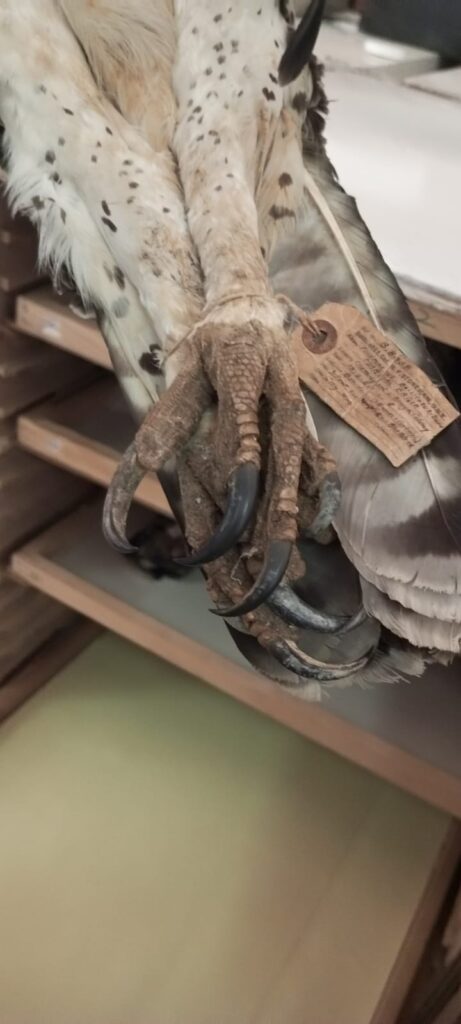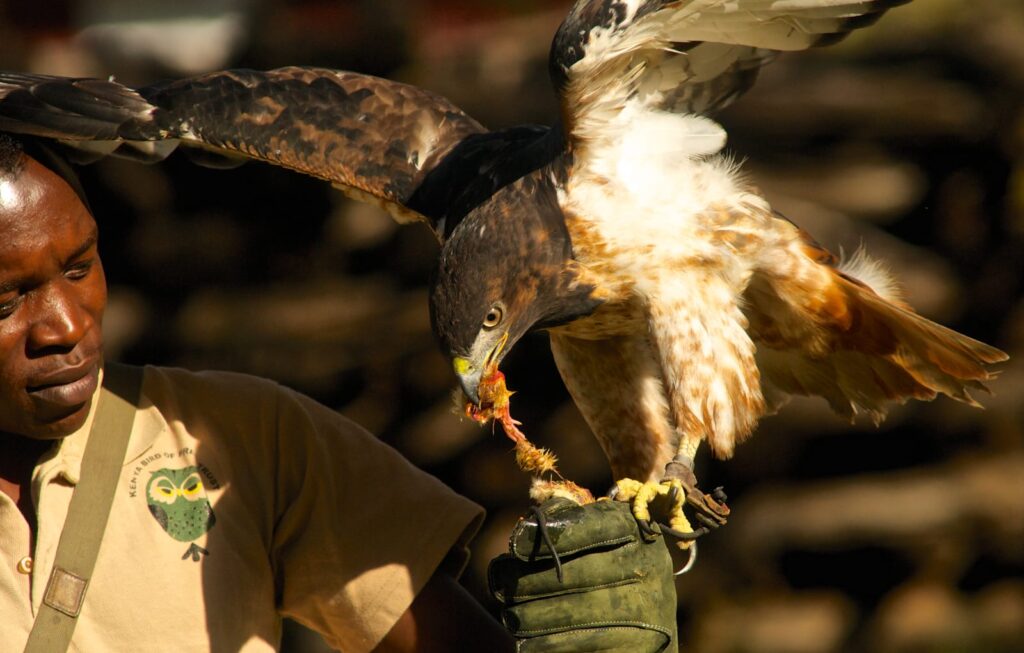By Bernard Muhia and Njoroge Waiganjo
Birds are unique in that they have a mastery of flight. Shiv Kapila, the Director of the Naivasha Raptor Center, which is part of The Kenya Bird of Prey Trust, says his excitement with birds is that fundamentally, they can fly. “I find that incredibly exciting, not enough is made about the fact that birds can fly” says Shiv.
Birds also make songs. How can we live in a world where there is no dawn chorus? The dawn chorus occurs when birds sing at the start of a new day. “If we wake up one day and find that all the birds are gone, how would that world be?” Asks Dr. Peter Njoroge, the head of the Ornithology Section at the National Museums of Kenya.

Passion
Dr. Njoroge’s passion started early while growing up in Nakuru where he would often come across abandoned little birds. He tried raising them mostly ending in failure because he didn’t know their diet. Birds always fall out of their nests and he would bring them back home and try feeding them ugali (a Kenyan delicacy made from maize flour). He had that curiosity to help them and that’s where his fascination with birds came from. His passion grew to the point that he got admitted to university to study wildlife management.
Birds are featured in many African folklore. “I don’t think there is a tribe in Kenya that doesn’t have a folklore about birds. Our ancestors were fascinated about how birds came about and during our research we found out that the folklore is somehow true” says Dr. Njoroge. “They knew these things, how they did, we don’t know”. He continues.

Mary Kimani, the Chairperson of the Lake Naivasha Biodiversity Youth Group is another bird enthusiast. She joined the Kenya Wildlife Services Training Institute where she learnt tour guiding and majored in bird identification. “Birds live within trees and thus conserving the environment and planting trees gives them a home” She says.
IUCN Red List
In Africa, we’re number two (2) in terms of the richness of bird species after the Democratic Republic of the Congo (DRC). Kenya has over 1,100 species of birds. Globally, we’re number thirteen (13) in terms of bird species richness. Despite this, Kenya has 46 bird species listed as globally threatened in the IUCN Red List. The IUCN Red List is the world’s most comprehensive information source on the global conservation status of animal, fungi and plant species.
To be listed in the Red List is basically a sign that the species is headed towards extinction if measures are not put in place to reverse that trajectory. “However, in the IUCN Red List, it is very hard to downgrade a species” says Dr. Njoroge”. But there was a time he went to Seychelles and there were only 80 birds of the Seychelles Magpie-Robin in the entire world. He worked on feeding and breeding them and together with other stakeholders, grew the population in 2007 to over 300 birds and the bird was downgraded from “critically endangered” to “endangered”.

Love
For the people that love biodiversity, it is hard to believe that as a human race, we are looking on as the sixth mass extinction of species is happening. “I love nature, I’ve always loved nature. Nature has given us everything, from the air that we breathe, the food that we eat, the water that we drink, the life that we live, everything is nature and right now it’s really suffering”. Says Sumaiya Harunany, Founder of Blue Earth Organization in Mombasa. She is involved in the preservation of mangroves along the coast where we have marine birds.

Threats
There are many threats that birds face and it is our collective responsibility to preserve biodiversity in general. Mary has noticed habitat loss and human activities affecting birds around the lake. “Some of the birds would go extinct in Kenya thereby losing the country tourists who are ornithology enthusiasts” she continues. Some of the birds that she is fond of are the Grey-crested Helmetshrike, the Grey crowned cranes and the Southern Ground Hornbill.
“To mitigate threats, we can create awareness among the young generation” Says Jane Gathoni, a research assistant at the Kenya Marine and Fisheries Research Institute (KMFRI) in Gazi, Diani, Kwale County. “When I grow older, I want to be an ambassador for conservation, telling people not to cut trees or litter because of the effects” she continues.

Finally
Conserving biodiversity is a task that we must all engage in to preserve the planet as a habitable globe. “We work so hard here, and it’s a small part of the world we work on because of limited resources.” Says Sumaiya. “The journey and our tasks are not easy and have a lot of challenges especially facing the leaders because they focus more on profits and greed.” Concludes Sumaiya.
This story was produced with the support of Internews’ Earth Journalism Network.
XXX END XXX
About the writers
Bernard Muhia is a journalist who has been certified on “Climate Adaptation in Africa” from the University of Cape Town, South Africa. He is an Internews’ Earth Journalism Network Grantee 2022. He is also a 10 Billion Strong Green Leaders Fellow 2022-23. He is a human and environmental rights defender.
Njoroge Waiganjo is a Projects Assistant Officer under Climate Change and Energy at Green Africa Foundation. He is, under the United Nations Institute on Economic Development and Planning, a Certified Young African Climate Change Negotiator.

